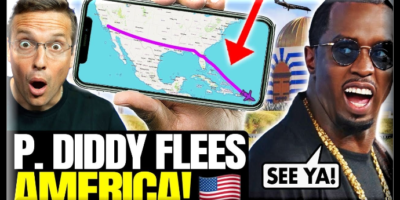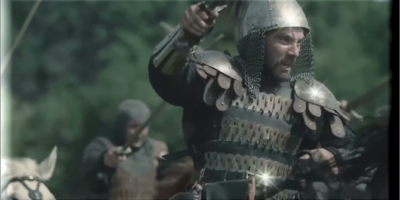Celebrities Who Messed With The Wrong Gangs…

In the glitzy world of Hollywood, where fame and fortune often go hand in hand, celebrities find themselves in all sorts of unique and unexpected situations. Yet, some have ventured into the perilous territory of street gangs, encountering the darker side of the fame game. From action heroes to music icons, these celebrities have tales that intertwine their rise to stardom with the gritty realities of gang life.
Arnold Schwarzenegger: The Invincible Beginnings
Before flexing his muscles on the big screen and serving as the governor of California, Arnold Schwarzenegger faced a different kind of challenge in his youth. Hailing from Austria, Arnold was once associated with a gang known as “The Invincibles.” Although he distanced himself from the gang long before his Hollywood breakthrough, the experiences he gained instilled in him the virtues of discipline and determination that would later shape his remarkable career.
Justin Bieber: A Brush with Celebrity Exploitation
Even the fresh-faced pop sensation Justin Bieber found himself entangled with the gritty world of gangs during his early career. Gang members saw potential financial gains in aligning with the young star. However, Justin quickly distanced himself from this dangerous liaison, choosing to focus on his music and philanthropic endeavors instead.
Dennis Rodman: Rebounding from the Gangster Disciples
Dennis Rodman, famous for his colorful personality both on and off the basketball court, once had a brief association with Chicago’s notorious Gangster Disciples during his time with the Bulls. Despite this short-lived connection, Rodman wisely distanced himself from the gang, redirecting his attention to his basketball career and later, his ventures in entertainment.
Britney Spears: Dodging Trouble in the Spotlight
Britney Spears, amidst the turbulence of her personal life, found herself inadvertently involved with a group linked to the notorious Crips gang in Los Angeles. However, Britney’s unwavering passion for music and her commitment to her career proved stronger than any negative influences, allowing her to distance herself from the perils of that association and reestablish herself as a successful artist.
Charlie Sheen: A Brush with the West Hollywood Bloods
In the midst of Charlie Sheen’s well-documented personal struggles, there was a time when he found himself connected to the West Hollywood Bloods. Realizing the potential repercussions of these affiliations, Sheen wisely severed ties with the gang, focusing on rebuilding both his life and career.
Lindsay Lohan: Navigating Fame’s Troubled Waters
Growing up in the unforgiving glare of the spotlight, Lindsay Lohan found herself entangled with questionable characters and rumored connections to various Los Angeles gangs. These associations contributed to her highly publicized struggles with addiction and controversial behavior. However, in recent years, Lohan has worked diligently to rebuild her career and distance herself from the shadows of her tumultuous past.
Mark Wahlberg: A Transition from Troubled Youth
Before becoming a successful actor and producer, Mark Wahlberg had a troubled youth, frequently running with a gang in his native Boston. Wahlberg’s personal experiences with the perils of the streets have undeniably influenced his perspective, propelling him to pursue accomplishments beyond the confines of his early environment.
Rihanna: Navigating Early Career Influences
Global music sensation Rihanna has managed to keep her personal life relatively private. However, reports have surfaced linking her to questionable acquaintances during the early stages of her career. Despite the nature of these connections remaining unspecified, Rihanna has consistently maintained her independence and prioritized her music career above all else.
Madonna: Gritty Beginnings in New York City
During her formative years, Madonna lived in the vibrant yet gritty landscape of New York City. Rumors persist that Madonna had associations with various youth gangs that influenced her distinctive style and artistic expression. Nevertheless, she transitioned to mainstream success, distancing herself from the early influences that shaped her journey.
Tupac Shakur: A Voice from the Streets
Tupac Shakur, an icon and voice of his generation, grew up in the crime-ridden neighborhoods of East Harlem and Baltimore. Affiliated with several gangs during his early years, Tupac’s socio-politically charged lyrics and immense talent played a significant role in his rise to prominence. His ability to transcend his gang-related past showcased the transformative power of music and art.
In the glittering realm of celebrity, the lure of risky affiliations and temptations is ever-present. Yet, these stories of celebrities who found themselves in unlikely gang encounters serve as reminders that the past need not define the future. Each of these individuals managed to break free from the ties that bound them, achieving remarkable success in their respective fields. Their journeys stand as testaments to the possibilities of change, growth, and resilience in the face of adversity.
The Mysterious Encounter: Unraveling the Tale of Jon Roberts’ Alleged Rescue of Jimi Hendrix
In the illustrious history of music, few names resonate as profoundly as the legendary guitarist Jimi Hendrix. Revered for his virtuosity and enduring influence, Hendrix’s legacy is etched into the fabric of musical history. However, within the intricate tapestry of his life, a peculiar tale emerges, as narrated by Jon Roberts in his memoir. A figure with a criminal past, Roberts, a former Mafia member intricately linked to the notorious Medellin Drug Cartel, asserts that he played a pivotal role in rescuing Hendrix from a kidnapping attempt in 1960s New York. This intriguing story, nestled amidst the shadows of organized crime, warrants examination, considering the unusual intersection of criminality and purported altruism.
The Encounter:
In the narrative spun by Jon Roberts, the 1960s found him navigating the clandestine world of organized crime in New York City. During this era, he crossed paths with Hendrix, a rising star in the musical realm. According to Roberts, he stumbled upon a sinister plot concocted by unidentified individuals to kidnap Hendrix, holding him hostage for ransom. Despite Roberts’ criminal background, he claims that a sense of redemption impelled him to intervene, shielding the musical maestro from imminent danger.
While Roberts’ credibility may be immediately questioned due to his criminal history, it is pertinent to acknowledge that even individuals entangled in nefarious activities can, at times, display unexpected acts of altruism. Roberts acknowledges his past transgressions and sees this act of “saving” Hendrix as a form of personal redemption. The narrative becomes a fascinating exploration of an unlikely savior emerging from the shadows of crime.
Gaining Hendrix’s Trust:
Roberts, in his memoir, recounts approaching Hendrix after one of his performances, delicately broaching the sensitive boundary between strategy and conspiracy. Having earned Hendrix’s trust, Roberts revealed details of the alleged kidnapping scheme, urging the guitarist to take the threat seriously. Hendrix, known for his spiritual inclinations and belief in the interconnectedness of life, contemplated the gravity of the information. Both men treaded cautiously, unsure of whom to trust.
A collaborative effort ensued, with Hendrix and Roberts devising an intricate plan to thwart the impending danger—they would go into hiding until the culprits were apprehended or the threat subsided. For weeks, they lived under assumed identities, concealing their whereabouts from the public, the press, and even those in their inner circles.
The Great Escape:
According to Roberts, their period of concealment yielded crucial evidence that exposed the identities of the would-be kidnappers. Once they believed the threat had diminished, they decided to share their findings with the authorities. Collaborating closely with law enforcement, they aimed to ensure the criminals faced justice and Hendrix’s safety was secured.
As they presented their discoveries, a palpable sense of relief enveloped both men. The police took the information seriously, initiating an investigation that led to the arrest of several individuals suspected of plotting the kidnapping. While the specifics of the investigation and subsequent trial remain undisclosed, Hendrix expressed profound gratitude to Roberts for not only rescuing him but also dismantling a dangerous criminal network lurking in the shadows.
The tale of Jon Roberts and his purported heroic act of saving Jimi Hendrix from a kidnapping attempt unfolds as a vivid tableau of life’s unexpected turns. The intriguing layer added by Roberts’ criminal background introduces complexity to the narrative, prompting readers to scrutinize the true motivations behind his actions.
Approaching such claims with a measured degree of skepticism is essential, recognizing that memories can be muddled, particularly when intertwined with an individual’s quest for redemption. Regardless of the veracity of Roberts’ story, the account of his encounter with Hendrix invites contemplation on the enigmatic interplay between crime, musical legends, and the potential for individual transformation.
Whether fact or fiction, this narrative prompts us to reflect on the profound impact artists like Hendrix wielded over the cultural landscape of their era. The story, while shrouded in uncertainty, encourages us to explore the intricate connections between the realms of music and organized crime, pushing the boundaries of imagination to contemplate what might have transpired.
Throughout his career, Roy Swire has remained true to his roots, using his artistry to inspire and uplift others. Whether through his music, writing, or activism, he continues to make a meaningful impact on the world, proving that art has the power to transcend boundaries and unite people from all walks of life.
Related News

Diddy FLEES AMERICA as Feds RAID His Mansions in MASSIVE Sex-Crimes Op! Lands On Epstein Island?!
Spread the loveThere has been shocking news circulating in the media recently regarding music mogulRead More

“Trojan Horse: Deception’s Anthem” is a powerful rock song
Spread the love“Trojan Horse: Deception’s Anthem” is a powerful rock song that tells the timelessRead More
